Review for Sorcery!

I had some very serious reservations about the conversion of Sorcery! from one of the most celebrated Fighting Fantasy books into a mobile game. As a child, I was an obsessive fan of Choose Your Own Adventure books. I was fascinated by the idea of being able to affect the fantastical narratives I was voraciously devouring, and the Fighting Fantasy books were my favorites because they combined my other prepubescent love, role-playing games. As an adult, I knew it was only a matter of time before Sorcery! was rediscovered and adapted to the e-book format, as interactive fiction has experienced a minor renaissance of late. So when I finally hit the Sorcery! icon on my iPad, I was full of apprehension. Could this version capture even a little of the joy and wonder of the original books?
My wizard’s hat is off to inkle, because they were indeed able to capture the magic.
If you’re even a peripheral fan of interactive fiction, or are looking for the closest RPG experience you’re going to get without a Dungeon Master and a few liters of Mountain Dew, I can unequivocally recommend Sorcery!. It’s not perfect – can any game ever completely replace the rapturous joy of reading a great book? – but I’m happy to say that the developers have brilliantly captured not just the story and the aesthetic but the very feel of the original novel.
For those not familiar with Fighting Fantasy, here’s a little background. In 1982, writers Steve Jackson and Ian Livingstone created the FF series, blending the interactivity of Choose Your Own Adventure books, where pages or passages are selected by the decisions of the reader, with the combat and dice-rolling of tabletop RPGs such as Dungeons & Dragons. The dice mechanics were fairly simple: you only needed a pair of six-sided dice to fight monsters or to “test your luck,” but they offered a random element that was attractive to those of us starved for the opportunity to explore fantasy worlds solo. This was all before cRPGs would become a much more readily available option.
The FF franchise was a very popular series in the gamebook genre – eventually spanning a total of 59 volumes. Most of the books were fairly short, and offered standard juvenile fantasy fare with titles such as The Warlock of Firetop Mountain or Deathtrap Dungeon. The Sorcery! series was originally written by Jackson to offer a more epic adventure, one having less in common with a lone RPG module and being more like an actual fantasy campaign. It was also to provide a much more mature fantasy experience than its pulpy siblings.
It’s important to understand that the current Sorcery! app is only the first installment in the printed Sorcery! series, The Shamutanti Hills. There are four books in the original series, which also include Kharé - Cityport of Traps, The Seven Serpents, and The Crown of Kings. In addition, there was also the Sorcery Spell Book, which detailed all of the magical spells that you could cast throughout the series. In fact, in the original books, the rules dictated you had to memorize the code words for any of the 48 spells if you wanted to use them in the books – no peeking was allowed once you started the adventure! Does it make me sound too geeky to admit that I memorized all 48 at age 10 (and still remember most of them at 39?)
So how was inkle able to make a successful translation of such a venerated series of interactive books? Perhaps the most impressive feature of inkle’s Sorcery! is that the changes necessary to adapt the book into its electronic form not only don’t detract from the experience, but in many ways actually add to it. In fact, after running through the iPad version, I’m not entirely sure what I’d say is the better, more definitive experience of enjoying the story.
The main plot of Sorcery! follows a very familiar path – especially at the outset – to fans of fantasy literature. You’ll be playing a nameless hero who must retrieve the fabled “Crown of Kings,” a powerful artifact that has been stolen by a ruthless warlord, from the dark fortress of Mampang. Each of the books in the series represents a different, significant environment that you must traverse until the final confrontation in The Crown of Kings. The first volume covers your adventures across the Shamutanti Hills, a long expansive region of hilly landscape which features a number of rural towns, mines, forests, and ruins to explore – depending on which directions you choose to explore, of course – and ends when you reach the gates of the city of Kharé.
In the printed version, you made choices like in any CYOA narrative, simply turning to the page that reflected your decision. The iOS interface is quite different. The game begins with you looking at a three-dimensional map of the entire Shamutanti Hills. In the middle of this map is a tiny figure representing your hero – I don’t know if it’s on purpose, but he really does look like a D&D figurine (you are stuck with only a male option for your hero) – and where you currently are. To advance the story, you drag a path from your character in the direction you want to go, which is symbolized by a tiny flag indicating each option (such as “leave town” or “visit the inn”).
Once you’ve arrived at one of the locations, a piece of parchment then appears with the original text from the book which describes that environment. In each area, you may also have a few choices to make: What would you like to purchase from the inn? What do you ask the old man in the corner? Each time you make a decision, another piece of parchment is added below the one you’re reading, as if they’ve been sewn together. It’s really a rather charming way to present the story.
Despite its conventional main plot, Sorcery! offers a world that is a little off the beaten path, having more in common with the older and weirder fantastical worlds of the '70s and '80s. It’s also a more dangerous and darker world than you’ll find in modern fantasy. The game’s elves, Elvins, aren’t tree-dwelling hippies but very malicious little tricksters. Monsters are cruel and vindictive to any adventurer foolish enough to cross their paths or trouble their dens. Dungeons are filled with tricks and traps which offer a multitude of gruesome ends. The world of Sorcery! is certainly not a fair one. You can and probably will experience deaths that feel arbitrary. You grow to understand why so few adventurers brave the perils of the Shamutanti Hills – and why even fewer return.
The original illustrations from the books, done by Gamer Workshop legend John Blanche, are all faithfully represented here and truly augment this unusual world. Their ethereal, otherworldly beauty is as intrinsic to the experience of Sorcery! as Jackson’s words are. They haunted my dreams as a child and are no less captivating now.
What the app offers that the books do not is a gorgeous graphical representation of the Shamutanti Hills region you are exploring. You can easily zoom in and out of each area with your fingers, and quickly center back on your character with the touch of an icon. Sure, being able to see the entire landscape you’re exploring may ruin some of the mystery of the original, but it does provides a perspective of the epic scope of your journey. The fact that it’s been rendered in 3D, offering insight into the changing elevations in the area, is also a nice feature. The new graphics blend seamlessly with the original illustrations and never seem out of place.
In the course of your travels across the map, you will face a number of nasty little beasties – and will either have to resort to magic or your blade in order to pass. Inkle’s version of Sorcery! offers a rather different take on the Fighting Fantasy RPG mechanics. In the books, Sorcery! had an abridged version of tabletop rules – your character had three stats: strength (which helped smack monsters), stamina (a combination of hit and magic points) and luck (a wildcard stat used in dire situations). In the iOS version, only stamina is used and it's a much more dynamic statistic. Its maximum range can rise and fall based on decisions made in the adventure, but it always serves its main purpose of defining the overall amount of physical damage you can take and the number of spells you can cast before meeting your maker.
Because of this simplification, combat has become a very different beast. When a fight occurs, a 2D illustration of your character will face off against a similar depiction of your adversary. Each of you has a meter on your respective side of the screen which represents your maximum attack power. I’m still not entirely sure what all can raise your attack power, although a weapon I found early in the game did.
Combat is turn-based; each round you and your opponent will select the power of your attack, never exceeding your respective maximums, and the higher number will inflict damage. That amount, though, will depend on the losing combatant’s own power – the higher attack level his unsuccessful attack was, the higher amount of damage he will take. The level of attack you choose in each round also saps the amount available for the succeeding round. This means that you will often choose an attack of level 0, knowing you’ll be hit but mitigating damage as you recover some of your attack strength. The opponents you’ll meet have wildly different attack levels – bandits are easily disposed of but monsters late in the game offer brutal challenges.
However, a book or game wouldn’t be called Sorcery! without a little magic to help you out in those battles – and often to avoid them altogether. Featuring all 48 spells of the original books, spells such as ZAP (lightning bolt) and HOT (a fireball) provide you with some serious firepower. Of course, each time you cast one of these spells, it saps a certain amount of stamina from you.
Here’s another area where inkle’s take on Sorcery! shines, as it captures the resource management strategies of the original. You will be hurting to keep your stamina at a level you feel comfortable with, and you’ll often run out of the rations you need to restore it. Many of Sorcery!’s spells can be used outside of combat as well: DOP unlocks doors, for instance, but because spellcasting saps your stamina, you have to be judicious with your use of the arcane.
This version has added an ability to call for help from your animal spirit deity – the only decision that seems a little at odds with the original’s darker fantasy world – which can be used to fully heal you once in the adventure or provide insight into a current danger. This is obviously intended to replace the original’s luck mechanic.
The final element inkle’s Sorcery! provides is the inclusion of sound effects, and I’m hard-pressed to say it’s not my favorite new feature. There is no voice acting (thankfully) but each of the areas offers its own ambient background sound – in towns, you’ll hear people bustling through crowded streets and calling to each other; in dungeons, you’ll hear the echo of water dripping off dark stalactites – and it’s beautifully implemented. Classical music is also used to provide context at critical moments, although I wasn’t especially fond of the fanfare blast of music when a spell is successfully cast – though its absence when a spell fails is a nice consequence.
I do have two criticisms of inkle’s adaptation. The first is simply the length of the game. Playing through the novel version of Sorcery! is a much longer experience, simply because in addition to flipping pages and rolling dice, you also have to keep track of your inventory and rations on a character sheet. With your tablet or phone handling everything, you’ll find yourself quickly speeding through to the end. Of course, because the game offers so many ways to finally meet your end (this first chapter starts off fairly forgiving but quickly ramps up the level of lethality as you venture further), you’ll likely have to replay a few times to finally reach the gates of Kharé. Moving through the Shamutanti areas and encounters so quickly removes a little of the epic feel of the adventure, but the fact that it can be so lethal means your ultimate play length may vary according to your decisions (and luck).
My first playthrough took just about a couple of hours, and since it ended with my poor hero crushed under a boulder, I played through it several times more, each time moving to grisly conclusion faster and faster without the need to read redundant text. You can avoid repetitive reading by making different decisions – choosing an overland route, for instance, rather than going through the forest – but your decisions will close as many doors as they open. Each choice offers different challenges and rewards, and because you can save as many heroes who have successfully traversed the Hills to inkle’s Cloud, you’ll have to decide which experience offered the best advantage heading into the sequel (or which choices were truer to your character).
While the total time spent in Sorcery! will vary by player, a complete and successful playthrough doesn’t take much more than an hour of play time. When I was happy with how my final experience turned out, I really wanted to seamlessly move into the next chapter, so be prepared for the annoyance of waiting a little bit to continue your adventure (unless, like me, you just end up pulling the old books from your shelf and moving on with dice…).
My other qualm is that the game is much, much more forgiving than the books ever were. I mentioned that the originals asked you to memorize any spells (and their respective three-letter code) you wanted to use before you began. Here, as long as you pick up the spell book at the beginning of the game, the book is always available to jog your memory.
In addition, every battle, whether you were successful or met your demise at the end of a highwayman’s blade, can be replayed instantly by clicking on the “Try Again” button. I’ll admit my own personal prejudice against the lack of real challenge in modern gaming (get off my lawn!), but one of the draws of the original Sorcery! series was how difficult it was. The threat of having to start at the very beginning of a four-book series if your character ever fell made the challenge as threatening as finally acquiring the crown of kings was rewarding. I never did successfully the finish the original series.
Inkle’s version removes that fear, and denying players even the option is one of the few changes that I feel really detracts from the experience. But a different gamer who may not have the inclination to invest the amount of time needed to start completely over may welcome this change. Even if that different gamer is a total wuss.
That being said, the iOS version of Sorcery! is certainly one of the best interactive adventures you can play. By remaining faithful to both the spirit and magic of the original while adding gameplay and aural elements that technology has made possible, inkle is offering one of the most singular fantasy experiences available on mobile platforms.
As a child, I remember doing my best to get all the kids on my blocks to read – and play – the original Sorcery! books. I’m happy, and a bit relieved, to find out that I’m going to be just as enthusiastic an evangelist for this new universal iOS version. So, what are you waiting for? The crown of kings is waiting for you…














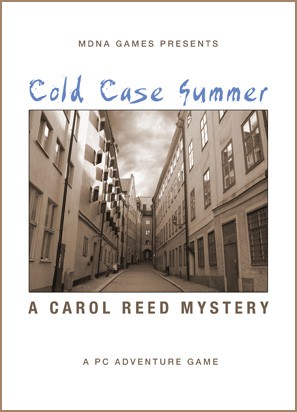


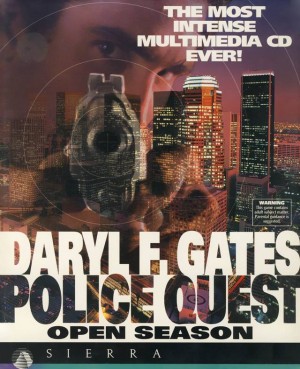
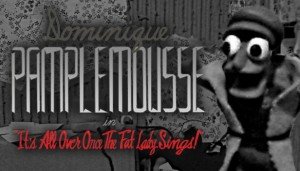
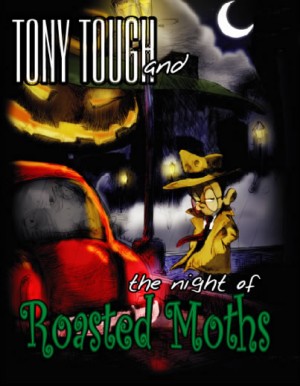
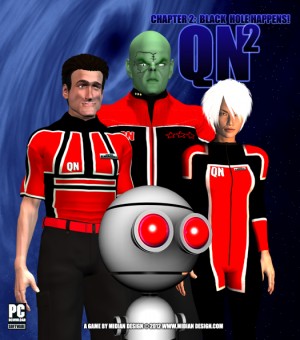


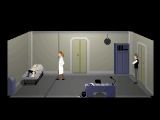

__small.jpg)








